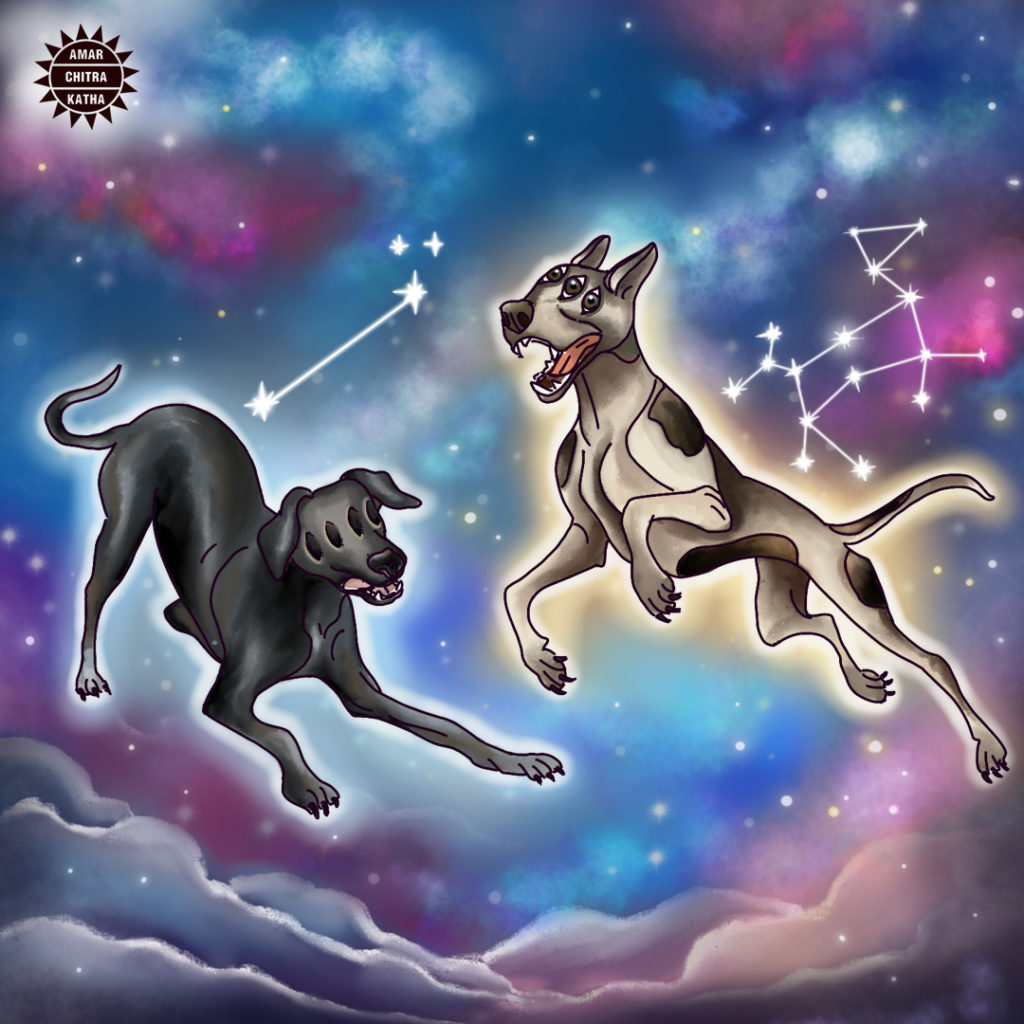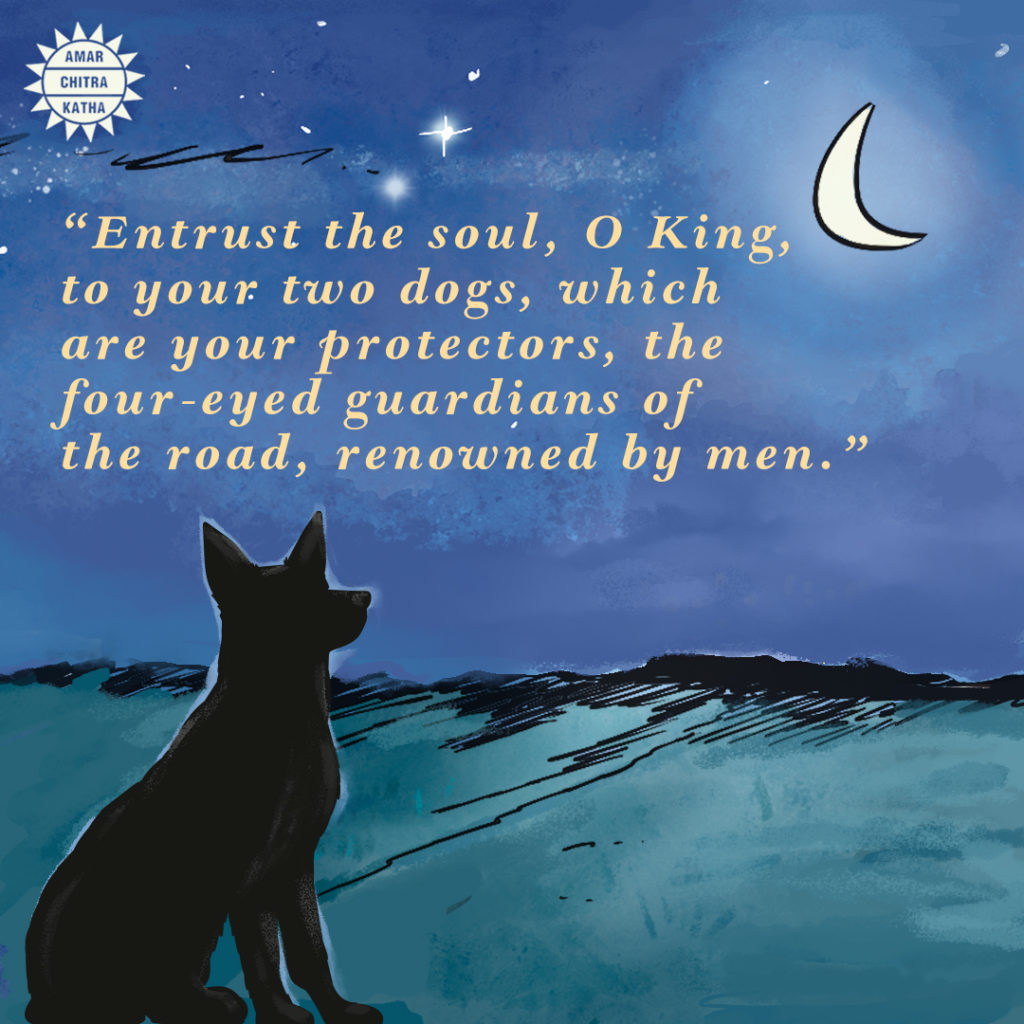By Shakthi Bharathi
Did you know that the Mahabharata ends with a dog? (It also starts with one, but that story is for another day.)
After years of prosperous rule, the Pandavas and Draupadi renounced the throne and embarked on their last great adventure. They crossed land and sea and came to a winding mountain, where a dog joined them. As they climbed higher, one by one they began to die, but the dog followed at Yudhisthira’s heels like a silent shadow. When the two finally reached heaven, Yudhishthira refused to enter unless his faithful companion was also allowed inside.
This story is not unusual. In world mythologies, dogs have often been associated with death.
Hunting parties led by kings always included hounds to fetch the fallen kill. A dog’s howl, especially in the middle of war, was considered an ill omen. And the gates of Yama’s realm, the Underworld, are guarded by two dogs—Shyama and Sabala.

Shyama (meaning ‘dark’) and Sabala (meaning ‘spotted’) can be described as dusk and dawn. Only one of them can see at a time, so they each have two pairs of eyes.
In some stories, they are kind—messengers sent by Yama to collect the souls of the dead and guide them through the afterlife. In other stories, they are fierce—standing watch over the gates that all must pass through to reach the hall of judgement.
The origins of Shyama and Sabala are uncertain. One version says they are from a group of asuras, called Kalakanjas, who were building a stairway to heaven. As the structure grew taller and taller, Indra pulled out one of the bricks. The whole thing fell apart, sending the asuras tumbling down. Most of them turned into spiders, landing safely. However, the two asuras at the top turned into dogs and were cursed to guard Yama’s kingdom forever. Another version calls them ‘Sarameya’ or the children of Sarama, Indra’s dog, who is considered the goddess of intuition and the mother of wild animals.
Wherever they may come from, Shyama and Sabala still hold a place in our rituals. They are given offerings of rice-balls and mentioned in prayers to Yama, dating as far back as the Rigveda, where a seer says:

The legend of these dogs has crossed the borders of India with Tihar, a five-day Nepalese Hindu festival, to honour creatures associated with Yama. On the second day, Kukur Tihar, dogs are worshipped.
Shyama and Sabala are also significant in astronomy, representing the Canis Minor and Canis Major constellations respectively. The Kailasanathar Temple at Kanchipuram includes two dogs in a depiction of Shiva bringing the river Ganga down to earth. This could be hinting at the Akasha Ganga (Milky Way) and its Canis constellations—Yama’s two watchdogs, eternally gracing the night sky.
Read more such Mythology stories here.





